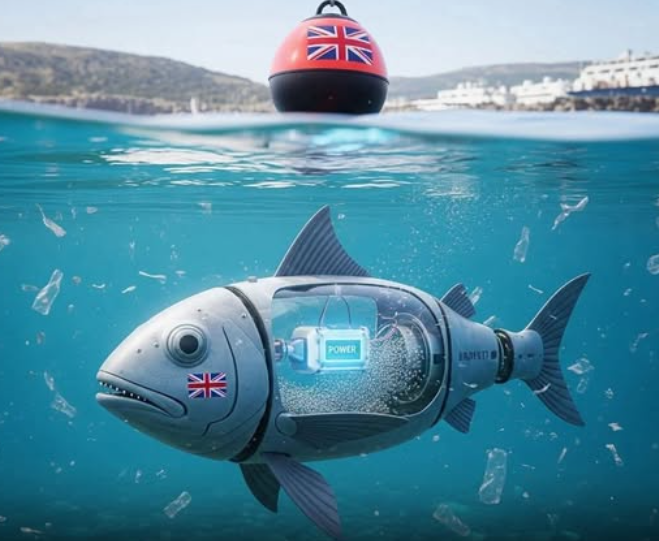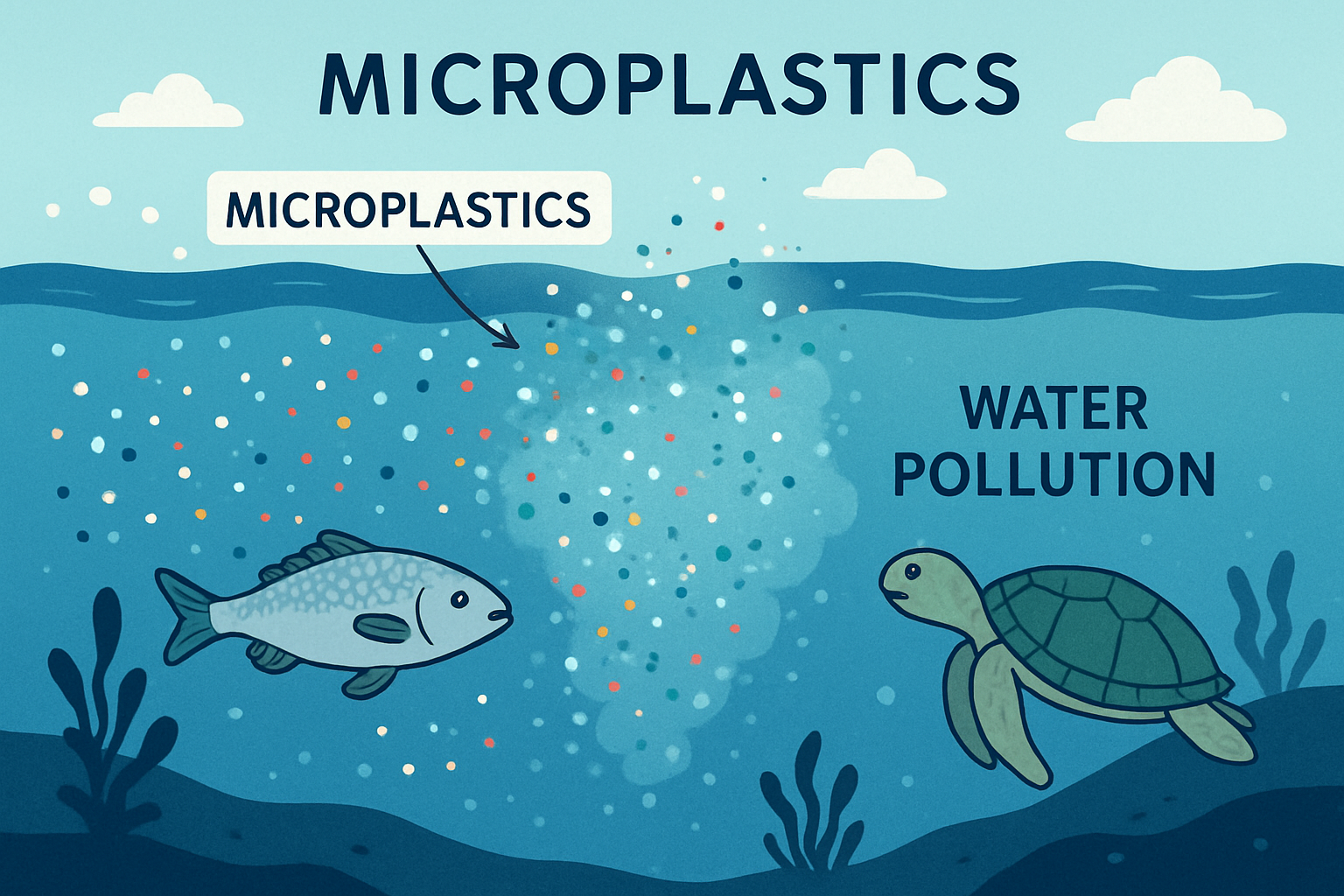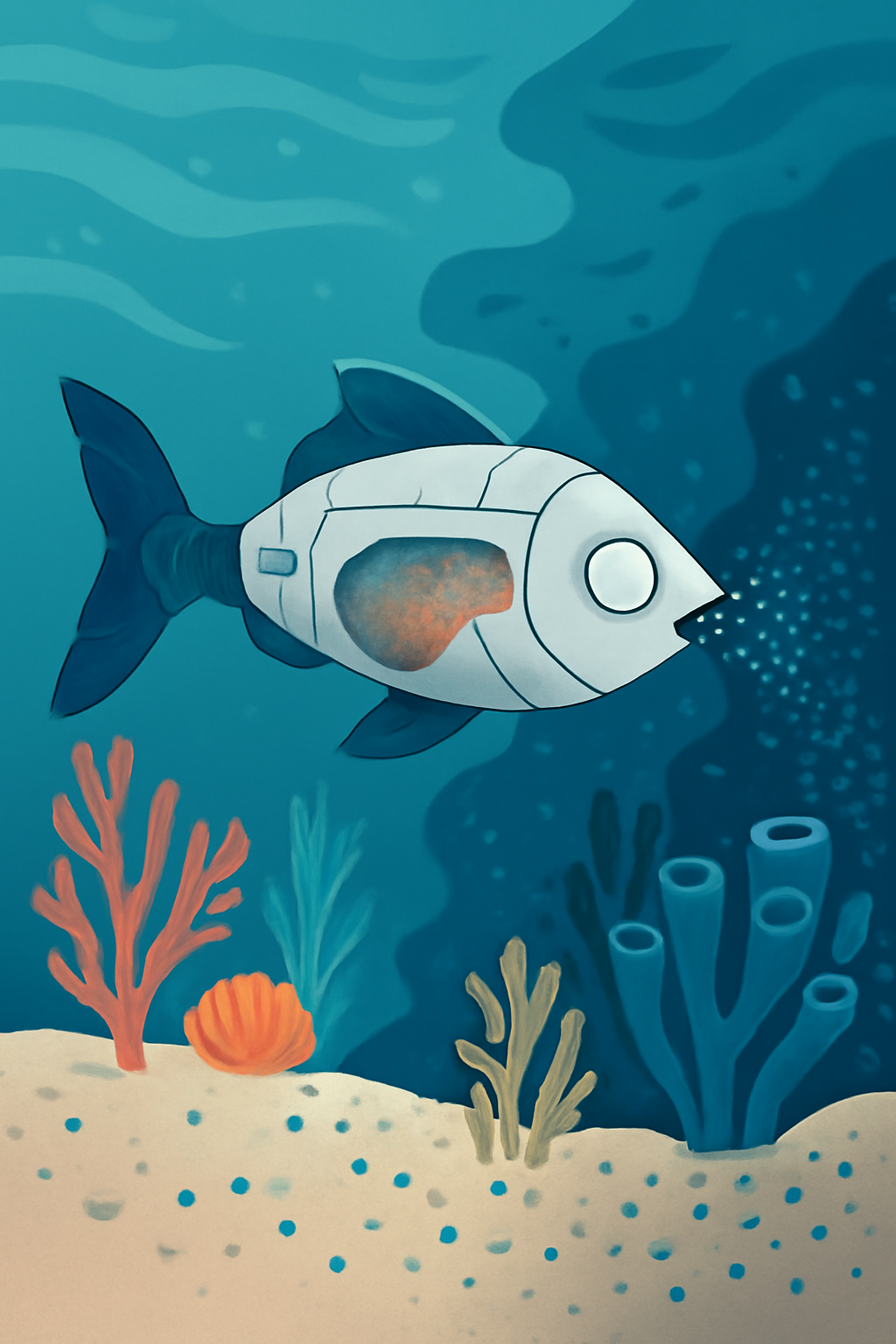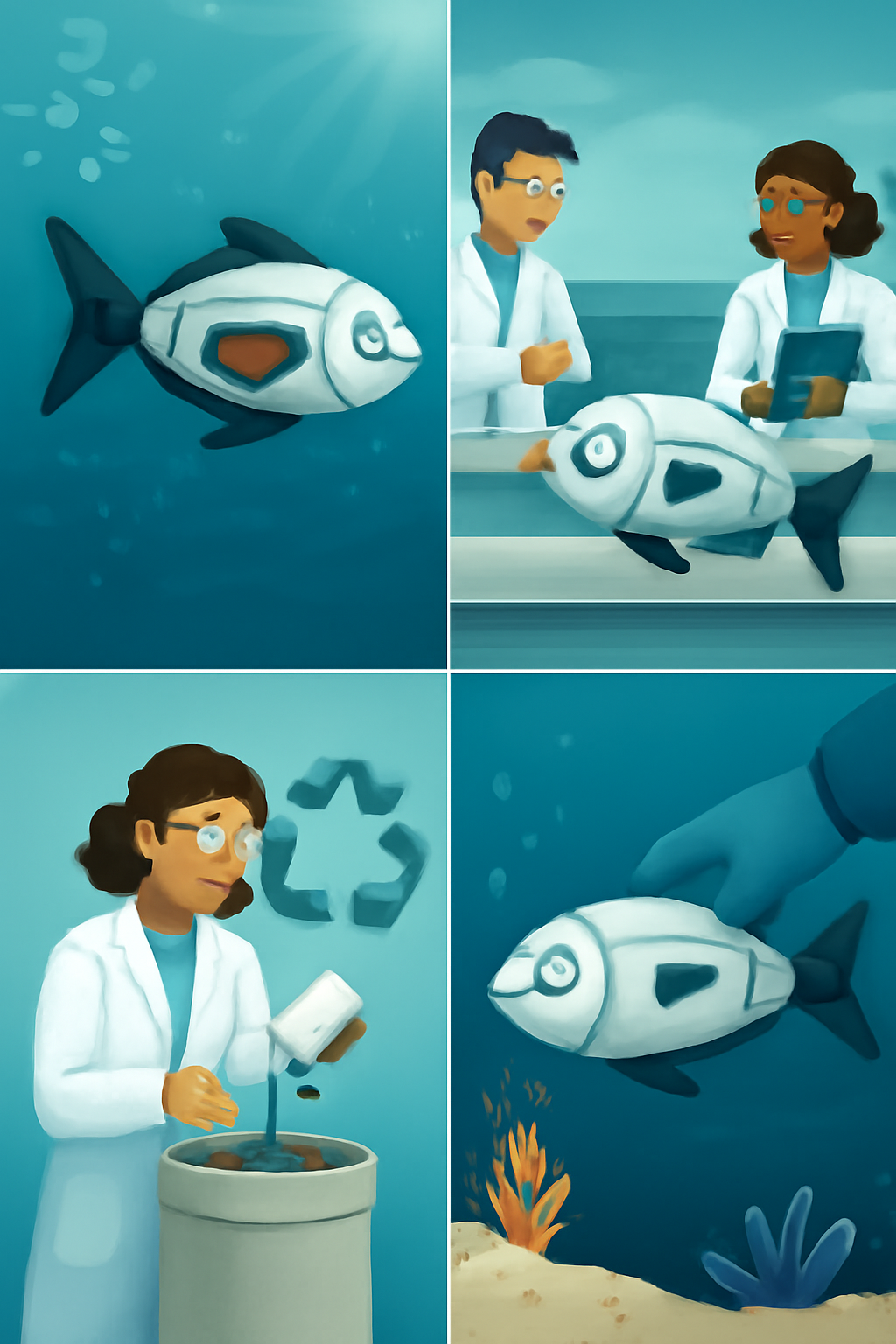Have you ever imagined a fish that doesn’t just swim but actually cleans the ocean? Well, that’s no longer science fiction. Researchers from the University of Surrey in the UK have created a robotic fish that not only removes microplastics from the ocean but also powers itself using the waste it collects! Yes, you read that right. The more it cleans, the more energy it gets to swim further.
In this blog, I’ll explain what this robotic fish is, how it works, and why it’s such a revolutionary step towards saving our oceans. Even if you’re a beginner and not from a technical background, don’t worry — I’ll keep things simple and easy to understand.
What Are Microplastics and Why Are They a Big Problem?
Before we talk about the robot, let’s understand the problem it solves.
-
Microplastics are tiny plastic particles less than 5mm in size. They come from broken-down plastic waste, synthetic clothing fibers, personal care products, and industrial processes.
-
These microplastics pollute oceans, rivers, and lakes, harming marine animals when ingested.
-
Fish, turtles, and even birds mistakenly eat these particles, causing health issues or even death.
-
The worst part? These plastics don’t biodegrade easily, staying in ecosystems for hundreds of years.
According to studies, over 14 million tons of microplastics are estimated to be at the bottom of the oceans globally. Cleaning them up is a massive challenge because they’re too small for traditional cleanup methods like nets or human divers.
Introducing the Robotic Fish: Nature-Inspired Technology
Now, imagine a robotic fish named Gillbert that silently glides through polluted waters, collecting microplastics as it swims — much like a real fish. Scientists at the University of Surrey designed exactly that.
Here are some key highlights:
-
Shape: Gillbert looks like a fish and moves like one using a flexible tail that mimics real marine creatures.
-
Silent Movement: Designed to swim quietly, it avoids scaring or harming marine animals.
-
Soft and Biodegradable Materials: Even if Gillbert gets damaged or lost, its materials won’t harm the ocean ecosystem.
In short, it behaves like a real fish, but instead of feeding on plankton, Gillbert "feeds" on microplastics.
How Does This Robotic Fish Work?
The technology inside this fish-shaped robot is both fascinating and beginner-friendly to understand.
Microplastic Collection:
-
As it swims, water passes through a filtering system inside its body.
-
Tiny plastic particles below 5mm get trapped in the filters.
-
These particles are moved into a special chamber inside the robot, storing the collected waste.
Turning Waste Into Energy:
-
Inside the robot, the collected plastics are compressed.
-
This compression process, combined with specialized technology, generates low-voltage electricity.
-
The energy created is enough to power the robot's internal systems, including its sensors and tail propulsion.
In simple words: The more microplastics it collects, the more energy it generates to keep swimming.
This makes it a self-sustaining robot. Unlike other underwater drones that need charging or fuel, this one literally “feeds” itself as it cleans.
What Happens When Its Chamber Is Full?
-
When the waste chamber inside the robot gets full, it automatically swims to the surface.
-
Scientists retrieve it and remove the collected microplastic waste.
-
That waste is then sent for proper recycling.
-
After emptying, the robot is redeployed into the water for another cleaning mission.
How Much Can It Collect?
According to the researchers:
-
One robot can collect around 2 kilograms of microplastics in just 12 hours of operation.
That’s impressive considering its small, fish-like size.
Future Plans: Swarm AI and Coastline Patrol
The current prototype is a single robot. But future plans are even more exciting:
-
Researchers are working on integrating swarm AI technology.
-
This will allow multiple robotic fish to communicate and work together like a team.
-
The vision is to deploy entire fleets of robotic fish that can patrol coastlines, harbors, and marine conservation zones, cleaning microplastics automatically.
Imagine a future where entire oceans are cleaned by robotic schools of fish working 24/7 without human intervention.
Why Is This Technology So Important?
Let me break down why this innovation matters:
- Problem : Microplastics are too small for traditional nets:
Solution : The robotic fish uses its advanced filtering system to capture these tiny particles efficiently. - Problem : Traditional cleanup needs human divers or ships:
Solution : These robotic fish work autonomously without requiring human effort, reducing costs and risks. - Problem : Battery-operated robots usually need frequent charging:
Solution : This robot powers itself by converting the collected plastic waste into energy, making it self-sustaining. - Problem : Hard robots can harm marine life:
Solution : The robotic fish is built from soft, biodegradable materials, making it safe for marine animals and the environment.
Real-World Deployments
Currently, these robotic fish are being used in:
-
Marine conservation zones
-
Polluted ports
-
Harbors along the southern coast of England
The goal is to test their efficiency and collect real-world data before scaling up production.
Could This Replace Ships and Divers?
Yes, in many cases. Traditional ocean clean-up operations are:
-
Expensive
-
Labor-intensive
-
Slow
Ships and divers are good for removing large pieces of plastic waste. But for tiny microplastics, these robotic fish are much more efficient.
In the future, fleets of self-powered robotic fish could quietly work under the ocean surface — cleaning up pollution constantly without needing breaks.
Final Thoughts: Why I’m Excited About This
Personally, I find this robotic fish innovation extremely exciting for several reasons:
-
It’s nature-inspired (mimicking real fish).
-
It uses waste as energy (solving two problems at once).
-
It’s safe for marine life and sustainable.
-
It works silently in the background — the perfect “invisible helper” for our oceans.
This shows how technology can work with nature, not against it. As someone passionate about environmental tech, seeing such practical solutions gives me hope that our oceans might one day be free of plastic pollution.
Conclusion
The robotic fish built by researchers in the UK is not just a cool invention — it’s a real step towards solving the global plastic pollution crisis. By mimicking marine life and running on waste-generated energy, it’s a glimpse into the future of eco-friendly, self-sustaining machines.
Imagine oceans filled not with plastic waste, but with robotic fish silently cleaning up after humans.
I’ll definitely be keeping an eye on this technology — and I hope you do too!




Comments
Post a Comment